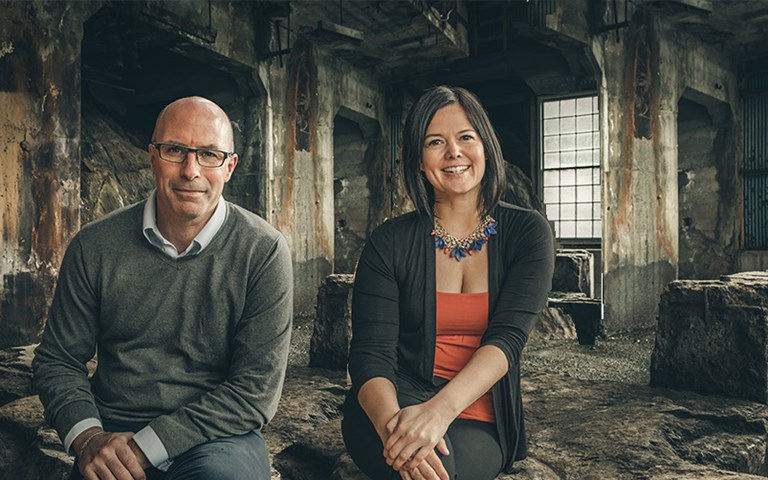Relationships between the mining sector and Indigenous peoples within Canada and around the world vary across a broad spectrum – from respectful and mutually beneficial to antagonistic and harmful. Despite these diverse variations, the ways in which the mining sector engages with Indigenous communities is getting better and the future holds significant promise for those companies and individuals who understand how to build and sustain meaningful relationships.
In discussions addressing the current and historical injustices and harm inflicted by colonial powers on Indigenous peoples both in Canada and globally, there is an increasing focus on pursuing reconciliation to address this past and chart a path forward for a better future.
In its 2015 final report, the Canadian Truth and Reconciliation Commission (TRC) defined reconciliation as “establishing and maintaining a mutually respectful relationship between Aboriginal and non-Aboriginal peoples in this country. In order for that to happen, there has to be awareness of the past, acknowledgement of the harm that has been inflicted, atonement for the causes, and action to change behaviour.”
Reconciliation covers a broad range of current and historical issues including the recognition of legal rights, government decision-making, land tenure and ownership, free, prior, and informed consent (FPIC) and key social issues including health, policing and education. For this discussion, reconciliation as it relates to the economy and the relationship between industry and Indigenous peoples is key.
What is meant by economic reconciliation?
There has been harm inflicted on Indigenous peoples worldwide through the unchecked exploitation of natural resources – without, in far too many cases, any material benefits returning to them. These same communities have also had to, in some cases, endure legacies of environmental degradation and negative social impacts that continue to this day.
Economic reconciliation is about acknowledging this harmful past, atoning for its causes and taking concrete steps to change the behaviour and actions of those involved in the resource-extraction industry today. This includes addressing critical issues such as the recognition of pre-existing Indigenous rights, FPIC, collaborative decision-making, the equitable sharing of benefits and sound environmental stewardship.
Today the Canadian mining sector is a global leader in building positive relationships between Indigenous peoples and industry. There is an increasing number of examples of truly respectful and mutually beneficial relationships being built across the country. For example, in British Columbia, the Tahltan Nation has partnerships and joint ventures in place with companies such as Newcrest Mining, Skeena Resources and the Sandvik Group. Osisko Development Corporation has been working closely with the Lhtako Dene Nation, Williams Lake First Nation and Xatśūll First Nation in the development of the Cariboo Gold Project. In Ontario, companies such as Alamos Gold, which is working with the Matachewan and Temagami First Nations at the Young-Davidson Mine, are demonstrating how respectful and mutually beneficial relationships can work. And there are many others.
What tools are necessary for advancing economic reconciliation?
The following are some key steps and tools that can be used to advance reconciliation in a tangible, authentic way:
» Self-reflection – Examining your own unconscious bias, perspective and understanding of Indigenous peoples and cultures.
» Educating yourself – Learning about Indigenous cultures and beliefs, the history of colonialism in Canada and elsewhere, the Royal Proclamation, the Indian Act and the United Nations Declaration on the Rights of Indigenous Peoples (UNDRIP).
» Land and water – Understanding Indigenous perspectives regarding environmental stewardship, Indigenous knowledge, cultural connection and time.
» Effective engagement – Learning how to engage in a harm-free way on a community-by-community basis.
» Entering into agreements – Understanding the role of legal agreements and trust in supporting productive relationships.
» Learning from case studies – Case studies across the resource sector in Canada provide valuable insights and examples of industry and Indigenous communities and businesses working collaboratively. This is an evolving space and one in which no one approach will be appropriate in every situation. However, by beginning with humility, understanding the source of your own beliefs and biases, investing in knowledge and understanding and being open-minded, there is a positive path forward.
What does “getting it right” look like?
There are many people and organizations advancing reconciliation today such as Indigenous leaders who are charting a good path for their communities and industry leaders who recognize the importance of this work and who are finding their own way to contribute to a positive future. There is no one answer for defining what it takes to “get it right” when it comes to economic reconciliation. As there are more than 600 recognized First Nations, Inuit and Métis communities across Canada and thousands around the world, “right” is a relative term that can only be defined by the community in which a project or relationship is being built. However, what is clear from recent examples of industry and Indigenous communities working together is that by starting relationships with respect and the recognition of rights, taking the time to understand different histories, perspectives and beliefs, being adaptable and open to new ways of doing business, doors to shared opportunity are being opened for all involved.
Michael McPhie, M.Sc., QEP, serves as co-chair and founding partner of Falkirk Environmental, is the former president and CEO of the Mining Association of British Columbia and is an officer and director of several publicly traded and private resource companies.
Christy Smith, B.NS., MBA, is a member of the K’ómok’s First Nation on Vancouver Island and is a partner and vice-president of Indigenous and stakeholder engagement at Falkirk Environmental and vice-president of sustainability at TDG Gold Ltd.
Together, they are the authors of Weaving Two Worlds: Economic Reconciliation Between Indigenous Peoples and the Resource Sector, a collaboration of two voices – one Indigenous and one non-Indigenous – presenting different ways of knowing and understanding what economic reconciliation really means. Visit www.weavingtwoworlds.com




